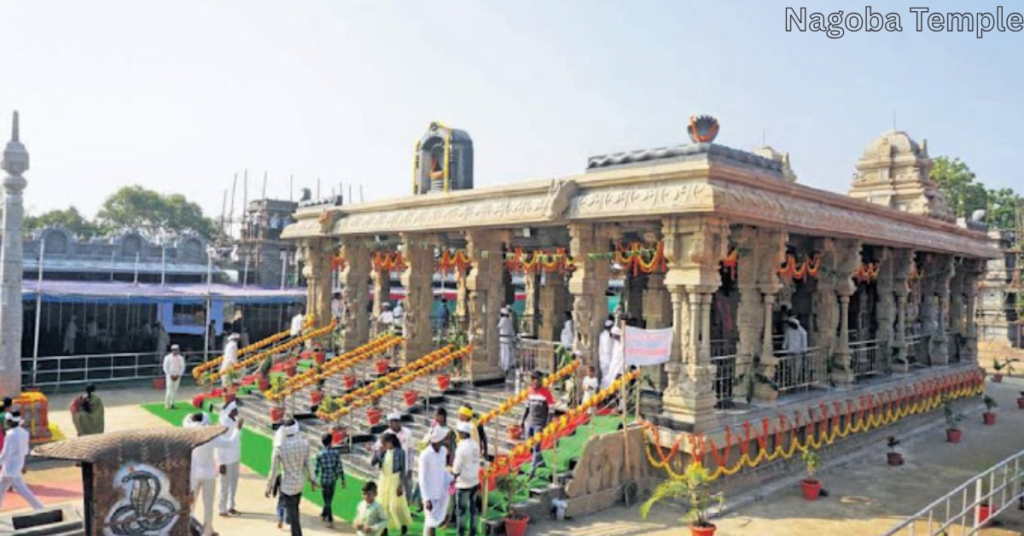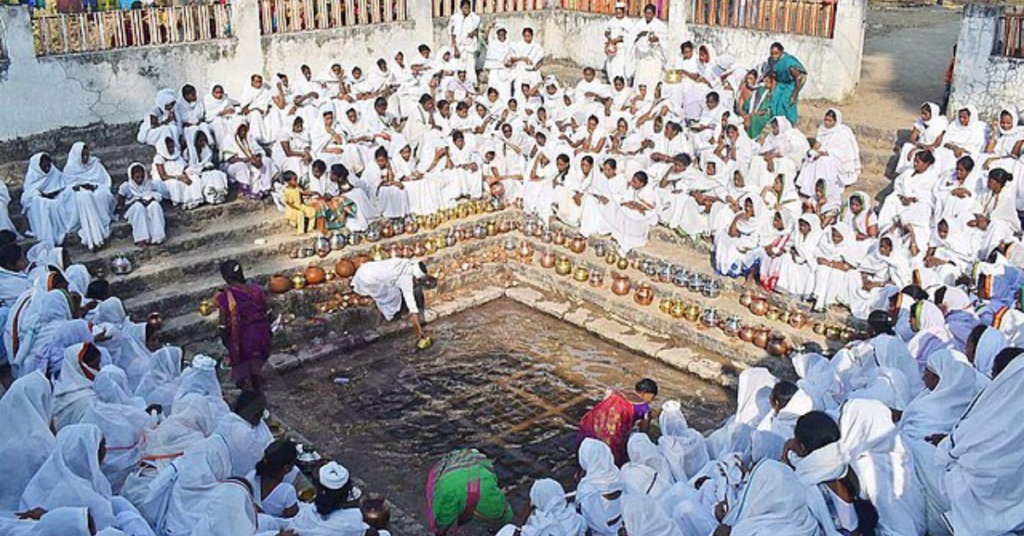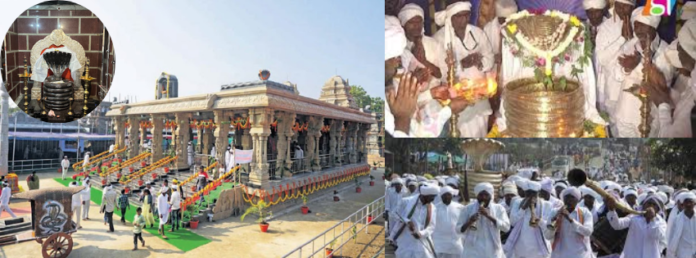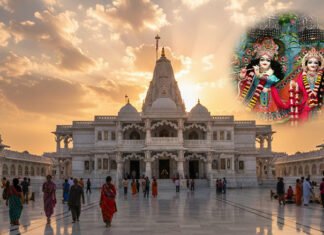A Whisper from the Forests:
It was a cool January morning when I stepped into Keslapur, a sleepy village in Telangana’s Adilabad district. But there was nothing sleepy about what was happening there. The air buzzed with drumbeats, chants, and a strange, primal energy. I was there to witness something truly ancient — the Nagoba Jatara, a festival that the Gond tribe had celebrated long before modern civilization even knew this land existed.
At first glance, it looked like a tribal fair — colorful tents, people in traditional attire, stalls selling forest herbs, and local delicacies. But as I spent more time, I realized this was far more sacred. This was not just a festival — it was a homecoming, a ritual, a reaffirmation of identity.

ALSO READ: Jainath Temple in Adilabad – The Secret Behind Its Celestial Blessings
The Mythical Origins of Keslapur Temple
The Gond tribal community, especially the Mesram clan, worships Nagoba at the Keslapur Temple. They honor him as a powerful serpent deity and ancestral spirit who protects the tribe and blesses them with health, wealth, and prosperity.
Legend has it that centuries ago, a white cobra appeared in the region. It was no ordinary serpent—it was believed to be an avatar of Nagoba. In reverence, the tribal elders built a shrine at the exact spot where the serpent vanished into the earth. Over time, this humble shrine evolved into the sacred temple that exists today.

Architecture: Simplicity Rooted in Symbolism
Unlike grand South Indian temples with towering gopurams, Keslapur Temple is modest. Its charm lies in its simplicity, echoing the essence of tribal beliefs.
- The sanctum houses a silver-plated idol of Nagoba, coiled in a majestic posture.
- The idol is said to represent fertility, rain, and protection from evil.
- Surrounding the temple are sacred stones and ancestral symbols representing different clans of the Gond community.
Every rock and carving around the temple has a story to tell—if you listen closely, the stones whisper secrets of centuries-old rituals.
Nagoba Jatara: India’s Second-Largest Tribal Festival
If you want to witness the heartbeat of Keslapur Temple, come during the Nagoba Jatara—a ten-day festival that begins every year in January or February, depending on the lunar calendar.
What Makes Nagoba Jatara So Special?
Celebrated by the Mesram clan of the Gond tribe, who consider this an annual reunion with their deity and ancestors.
It’s the second-largest tribal festival in India, after the Sammakka-Sarakka Jatara.
Attended by over 100,000 people, primarily from Maharashtra, Chhattisgarh, Madhya Pradesh, and Telangana.

🔥 Rituals That Echo Through Time
1. Bheting Ceremony (Adoption Ritual)
This is one of the most sacred and emotional parts of the Jatara. Young brides, newly married into the Mesram clan, are formally introduced to the clan deity Nagoba through this ritual. The process is symbolic of their initiation into tribal traditions.
I remember one bride’s eyes — nervous, reverent — as she touched the feet of the deity, watched over by her elders. It wasn’t just a ritual; it was becoming part of something eternal.
2. Mahapuja (Main Worship)
Held on the night of Pushya Amavasya (new moon of January-February), the Mahapuja is performed by priests from the Mesram clan. Offerings include goat sacrifices, turmeric, rice, and forest produce. Devotees light torches made of tree resin and dance in a trance around the temple.
3. Darbar (Tribal Council Gathering)
It’s not just a spiritual festival. The Nagoba Jatara also serves as a platform for tribal governance. Elders from various villages hold a Darbar where inter-clan disputes are resolved, marriages are arranged, and tribal rules are reaffirmed. It’s democracy in its most primal, purest form.

4. Hulki and Gusadi Dances
Perhaps the most stunning visual treat of Nagoba Jatara is the Gusadi dance. Men dressed in elaborate headgear, painted bodies, and peacock feathers dance to soul-pounding drum beats, often going into trances.
The Hulki dancers, on the other hand, perform more warrior-like dances, symbolizing protection and strength. These dances continue late into the night under moonlit skies.
Festivities Beyond the Temple
Besides rituals, Nagoba Jatara is a vibrant celebration of tribal life:
- Handicraft stalls showcasing Gond art and bamboo crafts
- Folk dramas and storytelling of tribal legends
- Traditional tribal foods like Mahua sweets and millet porridge
- Herbal medicine stalls by tribal healers
It’s a treasure trove for anthropologists, culture enthusiasts, and spiritual seekers alike.
What to Buy: Tribal Souvenirs & Handicrafts
The festival grounds turn into a bazaar of tribal art:
- Gond paintings
- Handwoven baskets
- Beaded jewelry
- Musical instruments like dhols and flutes
Buying these directly supports the local artisans and weavers.
🌄 Beyond Keslapur: Explore More in Adilabad
If you’re planning a trip to Keslapur, don’t miss:
- Kuntala Waterfall – Telangana’s highest waterfall
- Pochera Falls – Ideal for nature lovers
- Basar Saraswathi Temple – A revered shrine for education seekers
How to Experience Nagoba Jatara – Travel Tips
| Detail | Info |
|---|---|
| 📍 Location | Nagoba Temple, Keslapur village, Indervelli Mandal, Adilabad district, Telangana |
| 📅 Best Time to Visit | January-February (Pushya Amavasya) |
| 🛫 Nearest Airport | Rajiv Gandhi International Airport, Hyderabad (approx. 325 km) |
| 🚉 Nearest Railway Station | Adilabad Railway Station (32 km) |
| 🚌 By Road | Buses and cabs available from Adilabad town |
| 🛏️ Stay Options | Basic hotels in Adilabad; tribal guesthouses may be available during Jatara |
| 📸 Photography Tips | Always ask permission before clicking portraits of tribals or during rituals |
For the best Hotels for accommodation, check here
Find the best deals here: Flights & Hotels
🧳 Traveler’s Toolkit
- Essentials: Carry warm clothes (nights get cold), water bottles, and dry snacks.
- Respect tribal sentiments: Avoid interfering in rituals or mockery.
- Cultural Etiquette: Dress modestly and follow the local code.
- Cash Only: No ATMs in Keslapur; carry enough cash.
- Local Guides: Hire a guide from Adilabad for a richer understanding.
❤️ Why You Must Witness Nagoba Jatara At Least Once
In a world racing towards modernity, Nagoba Jatara is a pause. It’s a place where faith is raw, where music is not for entertainment but for the soul, and where identity is passed through fire and dance. Watching the Gonds reconnect with their roots, celebrating something ancient and untouched, left me humbled and inspired.
As the torch-lit processions faded into the night and the tribal chants echoed across the hills, I realized — this wasn’t just a festival. It was a story of survival, unity, and devotion.
Location Map For Keslapur Temple
Join the Tribe!
Have you ever been to a tribal festival like Nagoba Jatara? Would you dare dance to the trance beats of the Gusadi warriors? Share your thoughts, tag your fellow travelers, and start planning your cultural adventure!
📝 Drop a comment | 🔄 Share this article
FREQUENTLY ASKED QUESTIONS
Nagoba Jatara is a major tribal festival celebrated by the Gond tribe, especially the Mesram clan, in Keslapur village, Adilabad district, Telangana
The festival takes place every year during Pushya Amavasya, usually in January or February, depending on the lunar calendar. The main rituals span over 10 days.
Nagoba is considered the ancestral serpent god of the Mesram clan of the Gond tribe. Worshipping him is believed to bring protection, fertility, prosperity, and ancestral blessings.
The Mesram clan, one of the 13 clan divisions (Persa Pen) of the Gond tribe, organizes the Jatara.











